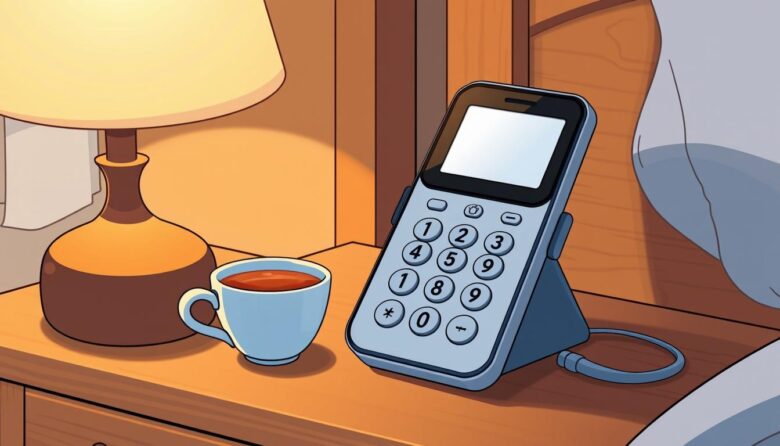Staying organized becomes easier when your device works with you, not against you. Modern technology offers simple solutions to manage medications, appointments, and personal routines. For older adults, these tools can be life-changing when tailored to their needs.
Today’s smartphones include features designed for clear communication and effortless scheduling. Large text options, voice commands, and visual alerts ensure you never miss important reminders. Many devices even allow custom vibration patterns for added convenience.
This guide focuses on practical methods to create reliable daily schedules. You’ll explore built-in tools that require minimal setup and third-party apps with enhanced accessibility. Learn how to adjust volume levels, repeat alerts, and label reminders for specific tasks.
By the end, you’ll master using your device as a personal assistant. Whether it’s tracking hydration breaks or remembering family calls, these strategies help maintain independence while reducing stress. Let’s transform how you approach each day—one well-timed alert at a time.
Understanding the Importance of Alarms for Daily Routines
Daily routines serve as anchors, offering stability in changing circumstances. For older adults, predictable patterns help manage health priorities and social commitments without feeling overwhelmed. When memory changes or complex schedules arise, structured reminders become essential tools for maintaining control.
Consistent schedules do more than prevent missed medications or appointments. They create a rhythm that supports better sleep by aligning wake-up and bedtime with your body’s natural clock. This regularity can improve energy levels and focus throughout the day.
Many find peace of mind knowing their device handles task tracking. Instead of worrying about what’s next, you can enjoy hobbies or conversations fully. For those managing multiple prescriptions, timed notifications act as safety nets—ensuring doses are taken correctly and on schedule.
Your mobile device also strengthens connections by reminding you to call loved ones or join group activities. These interactions boost emotional well-being and combat isolation. With simple adjustments, your phone becomes a partner in preserving independence while adapting to evolving needs.
Accessible features like voice commands and large text make these systems easy to use. By trusting technology with routine tasks, you free mental space for what truly matters—living fully each day.
Key Features to Look for in a Senior-Friendly Phone
Choosing the right device makes managing daily activities simpler and stress-free. Focus on designs that prioritize clarity and ease of use, especially for those with vision or mobility considerations. Let’s explore what truly matters when selecting a reliable companion for your routines.
Large Display, Big Buttons, and Intuitive Interfaces
A 6-inch screen or larger ensures text and icons remain visible without squinting. High-contrast colors improve readability, especially in bright environments. Devices like the RAZ Memory Cell Phone use picture-based buttons for instant recognition—perfect for those with memory challenges.
Physical buttons should be spaced well to prevent accidental presses. Models with oversized tactile keys help users with hand tremors navigate confidently. Simplified menus reduce confusion, letting you access essential functions in just a few taps.
Accessibility Options Like Font Size and Volume Control
Adjustable text settings let you customize labels and notifications to your comfort level. Look for phones offering font size options that don’t distort layouts when enlarged. This feature is invaluable for reading reminders or contact names quickly.
Prioritize devices with fixed maximum volume settings to guarantee alerts are always audible. The RAZ model, for example, locks sound at 126.5dB—ideal for users with hearing difficulties. Vibration modes add extra assurance, providing physical cues for every notification.
Set Alarm on Phone for Seniors
Your mobile companion becomes a powerful tool when you master its scheduling capabilities. Start by locating the pre-installed Clock application—most devices place it on the home screen or in a “Utilities” folder. Tap the Alarm tab to view existing reminders or create new ones.
Press the plus (+) button to design your first notification. Choose between spinning clock hands or typing numbers directly—both methods work equally well. Double-check AM/PM indicators if your device uses 12-hour time formatting to prevent midday confusion.
Personalize each alert with descriptive labels like “Blood Pressure Check” or “Evening Walk.” This helps distinguish between similar reminders. Third-party options like myAlarm offer extra flexibility, letting you pick calming tones or nature sounds instead of standard beeps.
Always verify the active toggle switch before saving. Some applications display a colored slider or checkmark when ready. Test your new reminder immediately to ensure volume and vibration settings meet your needs.
With practice, you’ll create multiple timed prompts for weekly activities. Repeating alerts for recurring events saves setup time while keeping your rhythm consistent. Your device evolves into a trusted partner, quietly supporting your daily flow.
Steps to Customize Your Alarm Settings
Personalizing your reminders turns routine tasks into seamless habits. With a few adjustments, you can craft notifications that fit your lifestyle while reducing stress. Let’s explore how to fine-tune every detail for maximum comfort and reliability.
Selecting the Right Time and Repeat Options
Start by choosing specific intervals that align with your daily rhythm. In the Clock app, tap the alarm’s down arrow to access advanced options. Schedule recurring notifications by selecting days of the week—ideal for medication schedules or weekly gatherings.
Consider adding a 10-minute buffer before essential events. This creates breathing room for transitions between activities. For example, setting a 9:50 AM alert for a 10:00 AM appointment helps you arrive prepared.
Choosing Tunes and Adjusting Vibration Settings
Replace default beeps with soothing melodies or favorite songs from YouTube Music. Premium users can link Spotify playlists for personalized wake-up calls. Test tones during daylight hours to find sounds that gently nudge without startling.
Enable vibration modes for discreet alerts—perfect for shared spaces or hearing challenges. Pair rhythmic pulses with ascending volume levels to create layered reminders. These combinations ensure you never miss time-sensitive tasks while maintaining peace of mind.
Using Dedicated Apps to Manage Your Alarms
Specialized tools transform how you handle daily schedules. While built-in clock features work well, third-party solutions unlock creative ways to stay on track. These apps often combine practicality with personal touches that make routines feel less rigid.
Exploring User-friendly Alarm Clock Apps
The myAlarm app stands out with its voice recording feature, letting loved ones create morning greetings or medication reminders. Imagine hearing a grandchild’s voice nudging you to take vitamins—it adds warmth to routine tasks. You can also select nature sounds or local radio stations to start your day informed and relaxed.
Location-based triggers ensure reminders only activate at home. This prevents confusion during travel while maintaining your home schedule. Gentle volume ramping helps heavy sleepers wake gradually, using soft melodies that build over 5 minutes.
Math puzzles to silence alerts keep your mind engaged first thing in the morning. Pair this with bedtime timers that play ocean waves until you drift off. These dual-purpose features support both wakefulness and restful sleep patterns.
Custom colors and themes make interfaces easier to navigate. High-contrast options improve visibility, while vibration/flash alerts work alongside audible tones. With these tools, your device becomes more than a timekeeper—it’s a personalized companion for daily success.
Integrating Reminders and Daily Routines Effectively
Synchronizing your schedule across devices creates a seamless flow between planned activities and spontaneous moments. The RAZ Memory Cell Phone simplifies this process by letting caregivers design personalized prompts that sync with your calendar. These notifications arrive exactly when needed, whether you’re at home or out enjoying the day.
Custom colors and adjustable text sizes make every reminder easy to spot. Choose between written instructions or voice recordings from loved ones—like a grandchild reminding you to hydrate. Caregivers receive confirmation through the RAZ Care app when you acknowledge each prompt, creating peace of mind for everyone involved.
Linking Alarms With Calendar Reminders
Pair timed notifications with your existing appointments to build a cohesive schedule. Morning medication alerts can lead into breakfast prep reminders, while afternoon prompts nudge you to call family members. This chain reaction turns isolated tasks into a natural rhythm that supports your goals.
Consider adding 30-minute buffers before events requiring preparation. A pre-visit reminder for doctor appointments gives time to gather insurance cards or jot down questions. Group related activities into themes—like evening wind-down routines with medication checks and relaxation exercises—to simplify complex days.
Consistency matters most. Repeating prompts at fixed times helps your body anticipate what’s next, reducing decision fatigue. With thoughtful planning, your device becomes a silent partner in maintaining both structure and flexibility throughout the week.
Optimizing Your Phone’s Alarm Features for a Gentle Wake-Up
Waking up feeling refreshed starts with how your device gently nudges you into the day. Many devices now offer gradual volume increase settings, letting sounds start softly and build over 5-10 minutes. This mimics natural sunlight patterns, helping your body transition smoothly from sleep.
Pair this with light-based features available on newer models. Screens can simulate sunrise by brightening slowly, syncing with your circadian rhythms. Nature sounds like rustling leaves or distant birdsong work better than sharp tones—they reduce morning stress while keeping you alert.
Smart alarms analyze sleep phases to wake you during lighter rest periods. Set a 30-minute window around your ideal time for optimal freshness. If using snooze, limit it to one 9-minute cycle to avoid grogginess.
Position your device 4-5 feet away—close enough to hear alerts but far enough to minimize blue light exposure. Night mode filters harsh tones, preserving melatonin production. With these tweaks, your mornings become calmer and more energizing.
Enhancing Alarm Accessibility and Visibility
Clear visual cues transform how you interact with daily reminders. Devices like the RAZ Memory Cell Phone lead the way with specialized modes for those needing extra support. Their design focuses on eliminating frustration while boosting independence through smart adjustments.
Modifying Display Settings for Better Clarity
High-contrast colors make text pop against backgrounds. Try white letters on dark screens or bright yellow against navy blue. These combinations help distinguish details if you experience fading eyesight or light sensitivity.
Enlarge text without losing key information. Most devices let you increase font size while keeping labels and times visible. The RAZ model automatically adjusts layouts so everything fits—no sideways scrolling required.
Keep notifications visible longer by extending screen timeouts. This gives you extra moments to read alerts before they disappear. Pair this with maximum brightness settings for dim rooms or early mornings.
Larger touch areas prevent accidental taps. Reduce sensitivity if shaky hands sometimes select wrong options. Flashing borders or blinking LEDs add visual backup for critical reminders—perfect when hearing aids are off.
Voice commands offer hands-free control when touchscreens feel tricky. Ask your device to repeat alerts or confirm scheduled tasks. With these tweaks, your technology adapts to you, not the other way around.
Leveraging Device Settings for Customized Notifications
Tailoring your device’s capabilities puts you in control of daily rhythms. Modern settings let you craft reminders that match your lifestyle through intuitive adjustments. Start by exploring display options—increase text size and contrast ratios for crystal-clear readability.
Vibration patterns work alongside sound alerts for layered notifications. Create unique pulses for different activities—two short buzzes for medications, three for appointments. Pair these with ascending volume levels that start soft and build gradually.
Consistency matters. Save favorite configurations as presets for recurring tasks. Many devices allow custom labels like “Morning Vitamins” or “Garden Time” using bold text. These visual cues help distinguish between similar alerts quickly.
Sync your preferences across device screens for seamless transitions. Tablets and smartphones can share notification profiles through cloud settings. This ensures reminders follow you from kitchen to porch without missing a beat.
With thoughtful tweaks, your technology becomes an extension of personal routines—quietly supporting independence while adapting to evolving needs.



